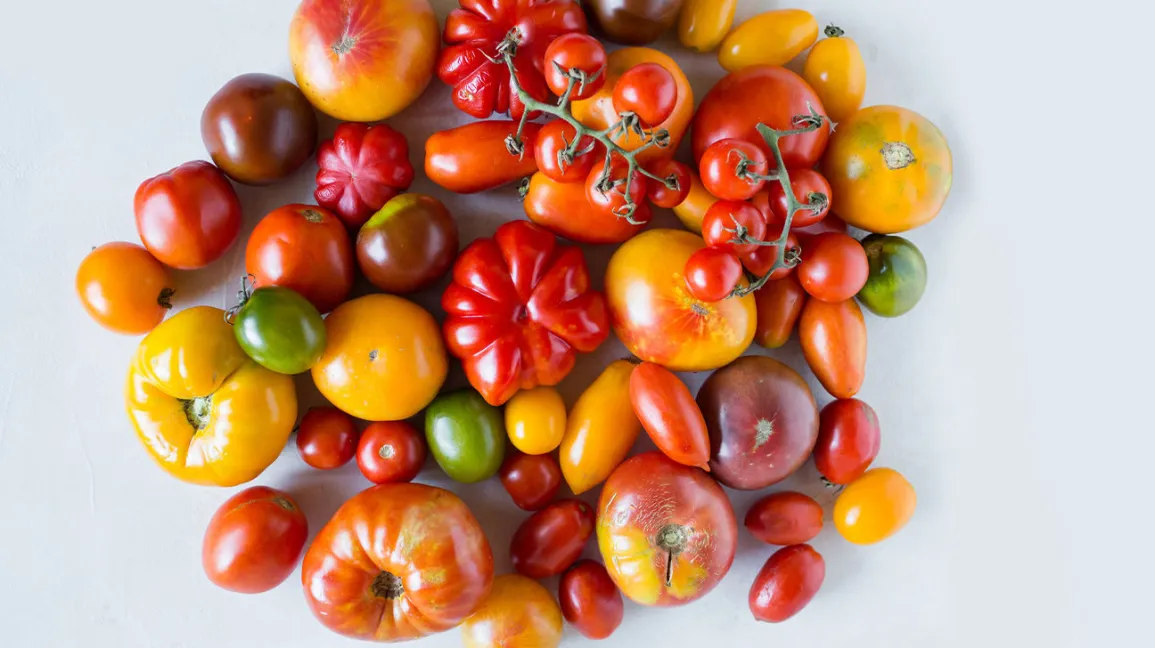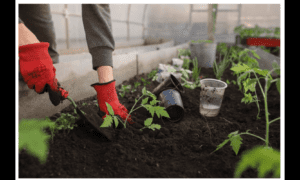The tomato, a staple in many cuisines worldwide, boasts an astonishing diversity. With over 10,000 known varieties, the tomato presents an impressive panoply of shapes, sizes, colours, and flavours.
This article delves into the abundant world of tomato varieties, exploring their historical development, the difference between heirloom and hybrid tomatoes, and how to select and cultivate different varieties.
In-depth knowledge about tomato diversity can enrich not only your gardening endeavours but also your culinary experiences. This exploration aims to provide you with a comprehensive understanding of the multifaceted tomato kingdom.
Key Features:
- There are over 10,000 known tomato varieties, showcasing a wide range of shapes, sizes, colours, and flavours.
- Tomato breeding techniques, such as selective breeding and hybridization, are used to enhance desirable traits and disease resistance.
- The history of tomato diversity includes the domestication process, which led to reduced genetic diversity, and modern cultivation practices that further reduced diversity.
- Popular tomato varieties include beefsteak, cherry, and heirloom tomatoes, each offering unique characteristics and flavours.
Understanding Tomato Varieties
Diving into the realm of tomato varieties, it’s essential to grasp the sheer diversity that exists within this globally popular fruit. Multiple tomato breeding techniques have been employed to develop over 7,500 known varieties, each with distinct characteristics.
These techniques, often involving selective breeding and hybridization, have been used to enhance desirable traits such as flavour, colour, and size. A critical aspect in tomato breeding is disease resistance. By choosing parent plants with inherent resistance to common pathogens, breeders have been able to develop tomato varieties that can thrive in adverse conditions, minimising crop losses.
This scientific approach to tomato breeding has led to the vast array of tomatoes we enjoy today.
History of Tomato Diversity
Although the tomato originated in South America, its journey to global cultivation has resulted in a staggering diversity of varieties, shaped by both natural selection and human intervention. The tomato domestication process is a testament to this, whereby wild varieties were cultivated and selectively bred to accentuate desirable traits.
This process, however, has implications on the genetic diversity in tomatoes. Here’s a snapshot:
| Stage | Diversity | Implication |
| Wild varieties | High | Greater resilience |
| Domestication | Reduced | Traits accentuated |
| Modern cultivation | Further reduction | Uniformity, potential vulnerability |
Despite the reduction in genetic diversity, it’s worth noting that the sheer number of tomato varieties today is a testament to the flexibility and adaptability of the species, an exemplification of nature’s ingenuity and man’s tenacity.
Popular Tomato Varieties
In spite of the decreased genetic diversity in modern cultivation, there exists a broad spectrum of popular tomato varieties that have gained prominence in the global market.
Tomato color variations play a significant role in this popularity, as they offer a visual and culinary diversity that is appealing to consumers and chefs alike.
‘Beefsteak’, characterised by its large size and deep red hue, is a staple in commercial tomato cultivation, prized for its meaty texture and robust flavour.
‘Cherry’ tomatoes, available in an array of colours from vibrant yellow to rich black, are celebrated for their sweet, tangy flavour.
‘Heirlooms’, with their unique colour variations and complex flavours, have seen a resurgence in popularity, underlining the continuing evolution of tomato cultivation.
Lesser-Known Tomato Varieties
While the common tomato types are widely recognized, there exists an array of lesser-known varieties that offer a unique range of characteristics. These include unusual heirloom varieties, boasting distinct colours, shapes, and flavors, which have been passed down through generations.
Additionally, there are rare tomato types and recent exotic discoveries, expanding the existing diversity in the botanical world of Solanum lycopersicum.
Unusual Heirloom Varieties
Delving into the vast realm of lesser-known tomato varieties, we discover an assortment of unusual heirloom varieties that add an intriguing range of flavors, colors, and shapes to the tomato world.
Tomato color variations, in particular, extend beyond the conventional red to encompass yellow, green, purple, and even black. Heirloom seed preservation enables these unique strains to endure, maintaining both their distinct characteristics and their historical connections.
Analysing the genetic makeup of these varieties provides invaluable insights into their resilience, taste profiles, and adaptability. These heirlooms offer a fascinating study in biodiversity, promoting genetic diversity while challenging our established perceptions of the ubiquitous tomato.
As we delve deeper, we transition into an exploration of rare tomato types, another captivating dimension of this diverse botanical family. Looking for more info? Our resources can help.Tomato Mentor
Rare Tomato Types
Beyond the realm of common tomatoes, there exists a myriad of rare, lesser-known varieties that offer a unique blend of taste, texture, and color.
These rare tomato types exhibit a remarkable range of tomato color variations, from the vibrant ‘Purple Calabash’ with its rich, burgundy tones to the ‘Green Zebra’, an intriguing variety that maintains a green hue even at maturity.
While these unique aesthetic attributes capture attention, the more scientific allure lies in their genetic makeup. Many rare tomato varieties have developed a level of disease resistance, a critical attribute for ensuring successful cultivation.
This aspect of disease resistance in rare tomatoes is a fascinating area of study, helping to strengthen the overall tomato gene pool.
As we delve further, we transition into the realm of exotic tomato discoveries, where novelty and science converge. Looking for more info? Our resources can help.Tomato Mentor
Exotic Tomato Discoveries
Exploring the spectrum of lesser-known tomato varieties reveals a treasure trove of exotic discoveries, each with unique characteristics that set them apart in the vast tomato family.
The ‘Green Zebra’ is a striking example of tomato color variations, featuring vibrant green stripes on a lime-green base.
The ‘Cherokee Purple’ offers a complex flavor profile and showcases the challenges of tomato cultivation with its susceptibility to cracking.
‘White Wonder’ exemplifies the diversity in tomato color, boasting a cream hue that defies the typical red stereotype.
Each variety presents its own opportunities and challenges, broadening our understanding of this diverse species.
As we delve into these unique types, we also prepare for the subsequent discussion on ‘heirloom vs. hybrid tomatoes’.
Heirloom Vs. Hybrid Tomatoes
One must understand the fundamental differences between heirloom and hybrid tomatoes in order to fully appreciate the vast array of tomato varieties available. Heirloom tomatoes, derived from generations of selective breeding, carry unique aesthetic and flavor traits. Hybrid tomatoes, which stir genetic modification controversies, are engineered to provide higher yields and disease resistance. Despite this, sustainability practices lean towards heirlooms for their genetic diversity and adaptability.
| Tomato Type | Key Features |
| Heirloom | Unique aesthetics and flavors, sustainable |
| Hybrid | Engineered for higher yield, disease resistance |
Understanding these distinctions can aid in making an informed choice. Now that we have discussed the differences between heirloom and hybrid tomatoes, it’s time to delve into how to select the perfect tomato variety.
Selecting Your Tomato Variety
Choosing the right variety of tomato largely depends on three key factors: growing conditions, taste and usage preferences.
The specific environment in which the plant will grow, including factors like climate, soil type, and sun exposure, will influence your choice.
Furthermore, personal flavor preferences and planned culinary usage, whether for salads, sauces, or slicing, will also play a significant role in the selection process.
Consider Growing Conditions
When it comes to selecting your tomato variety, it’s crucial to take into account the specific growing conditions that each type requires for optimal growth. Consider the following factors:
- Climate Influence: Tomatoes thrive in warm conditions, but the exact temperature range varies across different varieties. Some require long, hot summers, while others can cope with cooler, shorter seasons.
- Soil Necessities: Tomatoes generally need well-drained, nutrient-rich soil. The pH level, which can affect nutrient availability, should ideally be between 6.0 and 6.8.
- Sunlight Requirements: Most tomato varieties need at least six hours of direct sunlight daily.
Taste and Usage Preferences
How does your preference for taste and usage factor into the selection of your tomato variety? The answer lies in understanding the culinary versatility of different varieties and their unique tomato pairings.
| Tomato Variety | Taste Profile | Preferred Usage |
| Cherry | Sweet, Tangy | Salads, Snacking |
| Beefsteak | Hearty, Robust | Sandwiches, Grilling |
| Roma | Mild, Less Acidic | Sauces, Pastes |
| Heirloom | Diverse, Complex | Gourmet Dishes, Slicing |
Selecting a variety based on these factors will enhance your culinary experiences and ensure you are growing tomatoes that suit your taste and usage preferences. Now that we’ve understood the role of taste and usage in selecting a tomato variety, let’s delve into the practical aspects of growing different tomato varieties.
Growing Different Tomato Varieties
Where might one begin when considering the cultivation of various tomato varieties? A mastery of the following three key factors is essential:
- Seed Selection: Choose seeds based on climate suitability, growth habit, and personal preference. Each variety has a unique growth requirement and yield potential.
- Tomato Trellising Techniques: Proper staking and trellising systems enable tomatoes to grow vertically, promoting air circulation and reducing disease exposure. These techniques also facilitate easier harvest and improve fruit quality.
- Pest Prevention Strategies: Implementing integrated pest management strategies, including crop rotation, biological control, and safe pesticide use, can mitigate pest infestations.
Analysing these aspects systematically will assist in a successful tomato growing experience, regardless of the chosen variety.
Frequently Asked Questions
What Are the Health Benefits of Eating Different Varieties of Tomatoes?
Different tomato varieties offer diverse nutritional profiles. They are rich in vitamins, minerals, and antioxidants, notably lycopene. This nutrient is linked to heart health and cancer prevention, underscoring the importance of tomato nutrition comparison and lycopene benefits.
How Do Different Tomato Varieties Impact the Taste of Recipes?
The variety of tomato significantly influences the flavor profiles in recipes, especially in sauces. Certain tomatoes, with their unique acidity and sweetness, can enhance wine pairings, elevating the overall gastronomic experience.
What Is the Average Shelf-Life of Various Tomato Varieties?
The shelf-life of various tomato varieties is influenced by tomato preservation methods and the ripening process. For instance, Roma tomatoes, when stored correctly, can last up to two weeks due to their dense flesh.
Are There Any Unique Ways to Prepare or Cook Lesser-Known Tomato Varieties?
Unique preparation techniques for lesser-known tomato varieties include fermentation and pickling. Fermentation techniques unlock distinct flavours, while unusual pickles can highlight a tomato’s unique texture and taste, broadening culinary possibilities.
Are There Any Specific Diseases or Pests That Affect Certain Tomato Varieties More Than Others?
Yes, specific diseases and pests do affect certain tomato varieties more than others. Implementing disease prevention techniques and understanding tomato pesticide resistance is vital for maintaining healthy and productive plants.
Conclusion
In conclusion, the diverse domain of tomato varieties, with over 10,000 globally, offers a fascinating exploration into the realm of horticulture. Whether one is selecting an heirloom or hybrid variety, the decision dictates the plant’s growth, taste, and resistance. Understanding these variables aids in cultivating a successful crop.
Further research into lesser-known varieties could reveal untapped potential in terms of taste, texture, and adaptability, enriching our culinary experiences and agricultural practices.































